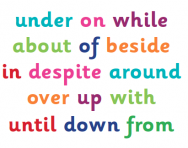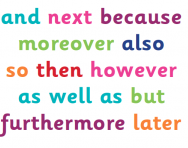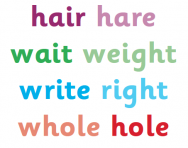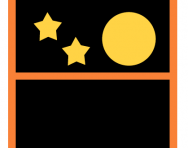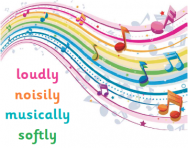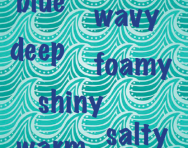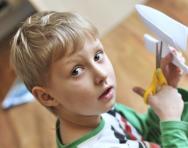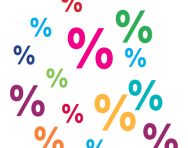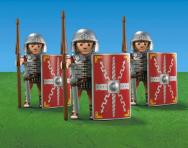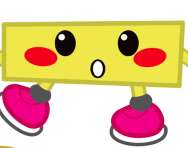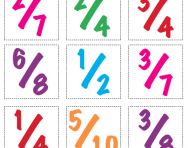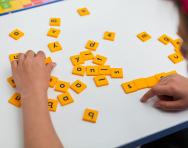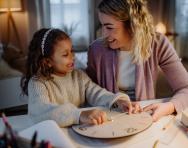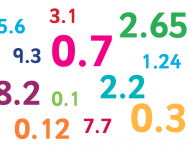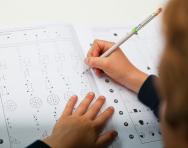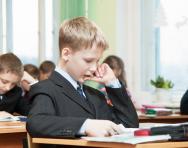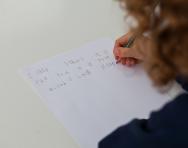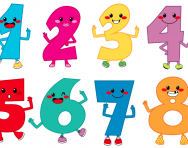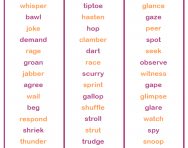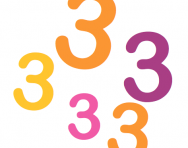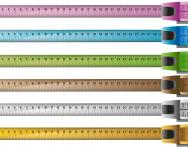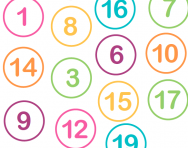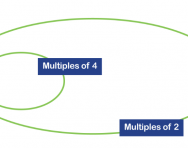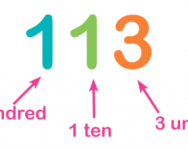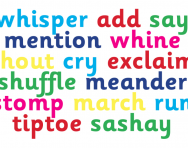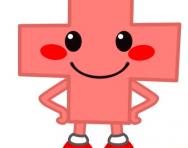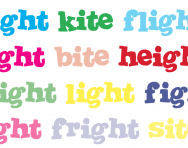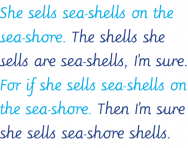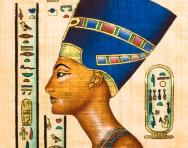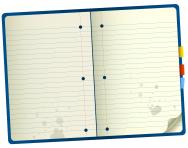Ks2 articles
What are prepositions?
Prepositions are some of the most common words in the English language. We explain how your child will learn to use them in primary school and why time connectives are so important in non-fiction writing.
What are connectives?
Has your child mentioned connectives? Connectives are joining words, and children will be taught to use them to connect phrases together into longer sentences and improve the flow of their writing. We explain what you need to know to help your child with sentence composition at home.
What is a homophone?
Homophones are tricky words which sound the same but have different meanings and are sometimes spelled differently (there, their and they're, for example). We explain how your child will be introduced to homophones in the classroom and tricks you can try at home to help them master homophone spelling.
What is personification?
In KS2 children often analyse figurative language when reading poetry and fiction. Personification, or giving a non-living object human characteristics to describe it, is a common technique children will study and learn to use in their own writing.
What is an adverb?
Adverbs give us more information about a verb, explaining how, when, where or why an action is taking place. We explain how children are taught to use adverbs to improve their writing in KS2, and how you can help at home.
What is an adjective?
Adjectives describe nouns, but how will your child be taught to use them correctly? We explain how word banks and a thesaurus can help improve your child's writing by encouraging them to use effective, powerful adjectives in their work.
5 at-home design and technology projects for primary children
Design and technology is part of the national curriculum. Teacher and parent Phoebe Doyle offers some practical D&T project ideas and suggestions to help your child get hands-on, boost their confidence and have fun (and make mess!) with materials at home.
Teachers' tricks for percentages
Percentages can seem like a tricky topic to tackle if you're not too sure about your maths skills, but by following our teachers' tips and suggestions you'll feel homework-confident in no time.
5 primary school art projects to try at home
Art is part of the national curriculum and one of the subjects your child will be taught at school. Teacher and parent Phoebe Doyle offers some practical project ideas and suggestions to help expand their knowledge and experience at home.
Teachers' tricks for multiplication
Can you multiply using the grid method, or draw a multiplication calculation as arrays? Find out more about multiplication and how it’s taught in schools today with our teachers' tips, tricks and methods, explained for primary-school parents.
12 of the best ways to get kids excited about history
We’re surrounded by history and heritage, and these books, games, toys and apps will make it come to life for children (and adults!) of all ages. Cook a Tudor treat, visit a virtual Roman London or read the diary of a war nurse – each activity is packed with information and details that create a real sense of being in the past. Start a life-long love of history and its treasures today!
Teachers' tricks for subtraction
Help your child become subtraction savvy with our teachers' tips on methods, practical resources, vocabulary and more. From subtraction songs and subtraction story problems to column subtraction, Phoebe Doyle offers some practical homework help for 'taking away'.
Teachers' tricks for fractions
From halves in quarters in KS1 to equivalent fractions in KS2, primary teacher Phoebe Doyle offers some insiders’ tips to help you help your child at home, plus details of fraction walls, hundred charts and other useful maths resources.
Encourage a love of drama and the stage
Whether your child is a diva in the making or more inclined to be backstage crew, drama and acting could help develop skills that will offer a boost in many areas of life, says Lucy Dimbylow.
10 ways word puzzles can help your child
Crosswords, word searches and hangman aren’t just handy ways to keep your child quiet for five minutes; they could also boost their learning in some surprising ways. Here’s how…
Best time-teaching products
Great toys, books and resources to help your child learn to tell the time on analogue and digital timepieces, from clock face recognition to estimating time differences on the 24-hour clock.
Teachers' tricks for division
Primary school teacher Phoebe Doyle has some tips and tricks to help your child with division work at home, offering an explanation of strategies using in school today as well as some useful practical exercises to try.
Teachers' tricks for decimals
Understanding decimals is vital for real-life, everyday maths. Phoebe Doyle offers some teacher tips to help your Key Stage 2 child understand what decimals are and how to use this knowledge in calculations.
8 facts all parents should know about the 11+ exam
Lesser-known facts and tips for 11+ parents and children, from fluctuating pass marks and tutoring to the Late Transfer Test and SEN arrangements. Olivia Holcombe reports.
The beginner's guide to the 11+
Is your child due to take the 11+ exam at the beginning of Year 6? Find out more about grammar school selection exams, how they differ across the country and the literacy and numeracy topics children are tested on.
What is a free school?
How do free schools differ from standard primary schools? How do they operate and what do they teach? If you’re thinking of sending your child to a free school, or just want to know more about them, here’s a brief parents' guide.
Common handwriting problems and solutions
Illegible handwriting? Huge letters? Strange pencil grip? Struggles with left-handed writing? If your child is finding handwriting hard, perhaps it’s one of these four issues. Find out more about how to tackle these common problems with advice from the National Handwriting Association's Angela Webb.
Holidays in term time: the parents’ guide
Once your child is at full-time school, cheap term-time holidays become a thing of the past. But who sets school term dates, and is taking your child out of school for a family break really a big no-no? TheSchoolRun explains.
5 number and counting skills primary-school children need
Numbers are all around us, almost from birth! Teacher Phoebe Doyle looks at counting, a fundamental aspect of mathematical understanding, to help your child grab the basics (without confusion!) from day one.
Teachers' tricks for shape, space and geometry
Throughout primary school children learn about the properties of the shapes in the world around them (primary geometry, in other words). Phoebe Doyle offers some insiders’ tips on helping them master shape and space maths targets.
What is a word bank?
Word banks are useful tools to help improve children's writing in KS1 and KS2. Find out how to create one at home and make expanding vocabulary a whole-family project!
What is a haiku?
Haikus are very short poems, usually about nature, which children often learn to write in KS2. From syllable structure to information about how they're taught in school, we explain what parents need to know.
Teachers' tricks for weights and measures
Weights and measures can be a really fun area of maths to teach in school – but one that can leave parents unsure of how to help at home. Teacher Phoebe Doyle has some hints and suggestions.
What are number bonds?
If your child is in Key Stage 1, chances are they'll have told you they're learning 'number bonds'... but what are they? Teacher Alice Hart explains why children are taught these number pairs, and how you can help your child practise them at home.
What is a Venn diagram?
Venn diagrams are often used to sort data in primary school. Find out what parents need to know about how to complete and read a Venn diagram correctly, plus how they're used in the classroom in KS1 and KS2.
What is place value?
A good understanding of place value (the value of each digit in a number) is vital in primary-school maths. Our parents' guide explains how your child will be taught about units, tens, hundreds and thousands with number lines, arrow cards and more, as well as outlining how place value is used to help children visualise calculations.
What is subtraction on a number line?
Also known as the jump strategy or complementary addition, subtraction on a number line is a common technique in KS1 and KS2 maths, useful for helping children visualise that subtraction is finding the difference between two numbers. Teacher Alice Hart explains the method and how it's taught in primary school maths.
What are powerful verbs?
Using powerful, descriptive verbs can make a big difference to your child's writing. We explain what parents need to know about powerful verbs (and ordinary verbs!) when helping with primary-school homework.
Teachers' tricks for addition
Help your child with their addition work, from the basics in Reception to calculations in KS1 and KS2, with some teachers' tricks to help the learning stick.
What is a play script?
Children learn to read, write and perform play scripts as part of the English and drama curriculum in primary school. Find out about the features of this genre, as well as ways to support your child's learning at home.
What is rhyme?
From reading rhyming poems to identifying rhyme schemes and rhyming couplets, we explain everything you need to know to help you support your child's love and learning of poetry at home.
What are alliteration, assonance and consonance?
When analysing poetry your primary-school child might mention alliteration, assonance and consonance. We explain what they've been taught to look out for in literacy lessons.
What is an information text?
Information texts are an important part of primary school literacy lessons. We explain the features of this non-fiction genre, why note-taking matters and how to help your child at home.
What is a recount?
Has your child been asked to write a recount? Find out what the main features of this kind of non-fiction text are, plus how recounts are used in primary school literacy lessons.
What is argument text?
Argument texts are studied and written in KS2 literacy. We explain the features to look out for in this non-fiction genre and how to help your child structure and write their own argument text correctly.
